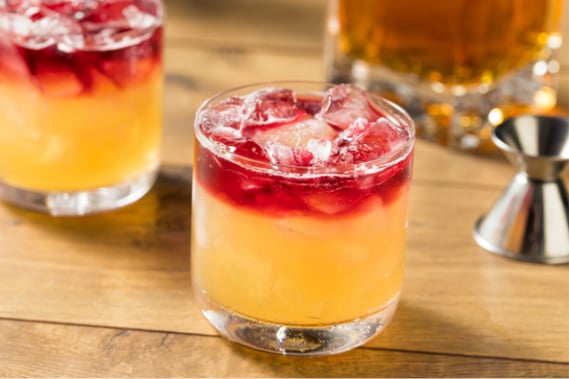Keeping your inventory levels low without compromising on service is a tricky balance. How do you make sure you don't run out of product, while also keeping inventory levels profitable?
Having an excess inventory may not seem like a big deal (we'll use it eventually, right?), but ordering too many cases of beer or wine will leave you in a major bind when it comes time to pay your rent and do your payroll. Extra cash flow is what keeps bars and restaurants operating within those thin profit margins.
With a few tweaks on your end, you can keep your inventory low, without compromising on great service. By keeping your inventory levels low, you will:
- Move product faster
- Reduce waste and spoilage
- Place more accurate orders with vendors
- Maximize your profits

So, how do you become an inventory master? Well, you can't reduce your inventory if you don't do your inventory. Whether you choose to do your inventory weekly, bi-weekly, or monthly, setting a consistent inventory schedule (and adhering to it) is the best way to get started.
Here are some tips and best practices to get you up to speed.
Set Your Par Levels
Figuring out par levels for wine, liquor, and beer is going to be the deciding factor for how much you keep in stock.
By definition, your par level is the minimum supply necessary to satisfy customer demand. If you don't know what's selling (or how much of it), then you can't accurately gauge how much you need to order.
Looking into your POS system for data is a great place to start. By going over your sales reports, you can find out what your guests are ordering, and how frequently you sell certain items. This will orient your ordering needs in the future, and reduce your risk of placing unnecessary orders.
Still don't know where to begin with your par levels? It's not as bad as you think, but we've made it a little easier with this free par level worksheet (yes, we're letting you copy our homework).
Pare Down Your Selection
Once you do your par levels, you may realize that certain items just aren't moving out of your inventory quickly enough. How can you get product out the door faster?
Limiting your selection may be the answer. Having a wide selection gives your clientele a lot of options, but a full inventory also lends itself to the potential for unsold product. By reducing your menu offerings, you'll spend less time doing inventory, and you'll cut down on the volume of product in your inventory.
You may think that your guests love having an abundance of choice, but too many options can actually be overwhelming. By offering a select handful of good quality options, you're actually making it easier on your guests and your bottom line.
 Do an audit on your current menu offerings—do you really need eight different types of vodka? Can you get by with one pilsner on tap instead of three? Asking yourself these questions can help you figure out where to trim the excess liquor and beer cluttering your shelves.
Do an audit on your current menu offerings—do you really need eight different types of vodka? Can you get by with one pilsner on tap instead of three? Asking yourself these questions can help you figure out where to trim the excess liquor and beer cluttering your shelves.
There are some exceptions, however. If you are a speciality bar that boasts an extensive wine list, or a craft beer bar with dozens of brews on tap, we get it. Offering choice is part of your identity, so it doesn't make sense for you to cut back your sprawling collection to three options.
In this case, you can pare down on other options to bring the focus to your main selection. If you're a whiskey bar, there's no need to offer an abundance of tequilas, vodkas, and rum. Simplify the menu outside of your specialty items, and steer your guests towards your inventory.
Keep Your Inventory Organized
How many times have you ordered something (under the impression that you were out of it), only to discover a full keg or case of beer tucked away in some corner? It's frustrating, and yet it's a scenario that's entirely avoidable.
We're not trying to nag you, but yes, we are kind of telling you that you need to clean your room. It's a mess in there.
To keep your inventory low, you need to know what's in it, and it's hard to keep track of your inventory if you don't know where to find things. A messy stock room means you have to spend a longer time taking inventory, and you'll end up with inaccurate numbers. You'd be surprised how easy it is to lose track of items if you're not following a consistent protocol.
To mitigate the potential for an ordering mishap, your front bar, dry storage areas, and coolers need to be labeled, clean, and organized. As you store items, make sure to follow the first in, first out rule. Rotating your stock will ensure you're moving through product efficiently.
Make Your Inventory Do Double Duty
Find ways to incorporate ingredients (especially those that are perishable) across multiple menu items. If your signature cocktails all have specialized syrups and mixers that can't be used in different drinks, then you're doing yourself a disservice.
Stock your bar with items you can use across the board. You'll work through your inventory faster.
Consider using items that aren't selling well in your cocktails. If you have boxes of unsold tequila sitting in your inventory, add a Paloma to your cocktail menu. If you find yourself pouring open bottles of wine down the drain, add a New York sour to your menu. You're building that product into your menu, and making it more likely to sell.

Use a Bar Inventory Software
Well, this one seems to go without saying. We might be tooting our own horn, but we came up with Backbar for a reason.
Taking inventory (and keeping it low) isn't an easy feat to accomplish with the old pen and paper. Pen and paper has done a lot of great things, but it's time to upgrade your inventory routine.
If you're still skeptical, this two minute video will show you how easy it is to log an accurate inventory using our app. You can thank us with a beer later.
Key Points to Remember:
- Figure out your par levels
- Reduce your menu
- Organize your inventory
- Cross-sell your items





